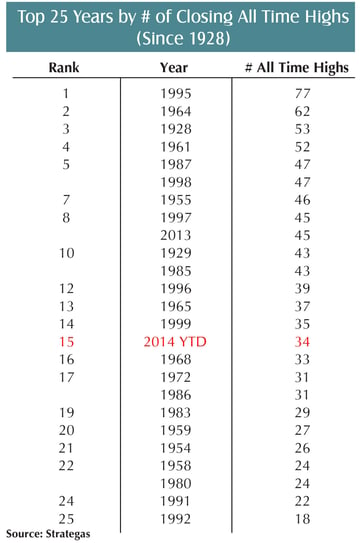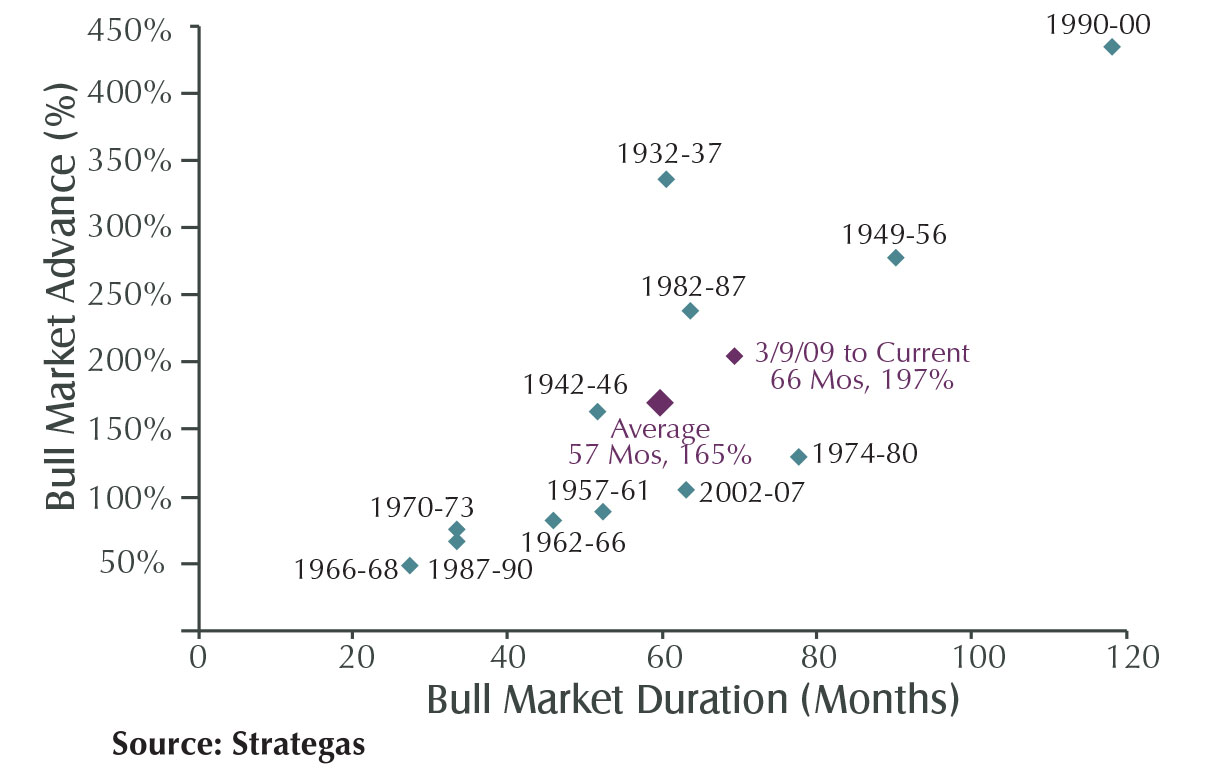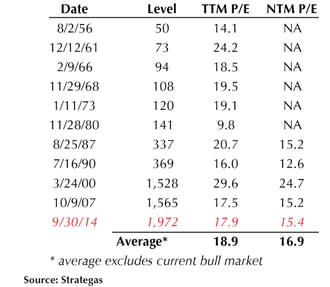CONSERVE. PLAN. GROW.®
A common question that I frequently hear from our clients at The Fiduciary Group is “how can we invest fresh cash in stocks and bonds when prices seem so high?” Stock indices have repeatedly set new records this year, and bond prices have moved higher as yields have hovered near historic lows. Investors have continued to put money into these investments despite perceived high prices and geopolitical tensions that appear set to ignite global conflict.
A successful long-term investment strategy should be based on building a portfolio with a combination of equities and fixed income securities. With cash earning virtually nothing, there really is not much incentive to hold cash in an investment account. However, it is indeed the investor’s dilemma to commit to invest fresh cash when prices appear expensive for both of these asset classes. No one wants to buy something only to see the price decline shortly after the purchase.
34 All Time Highs in 2014 and Counting

I believe you can find suitable investments whenever you have cash to invest, regardless of what direction you think the markets may next be headed. More often than not, markets act much differently than one expects. Headlines may or may not move markets. It is too difficult to time market direction based on perceived market reaction to specific events.
There are many factors, which affect a market’s valuation. Market direction has a big influence, whether in an uptrend or a downtrend. Positive price momentum has played a critical role in the stock market’s almost nonstop climb upward this year. Investors have bid up prices for stocks despite lower growth profiles for companies operating in an economy that is stuck in a low growth mode. Because of high profit margins, company net income has been growing faster than revenues and the overall economy. There is plenty of liquidity around the world, which has also helped to drive valuations higher. Cash has been directly flushed into the financial markets both from central banks and from money market and savings accounts.
Investor demand for US bonds has been nearly insatiable, even though expected returns are modest. Low inflation expectations have positively impacted bond prices as investors recognize that real returns on bonds (returns after inflation) are not totally unattractive. With all of these factors contributing to market advances, there is no easily discernable ceiling on asset prices. Just because indices are at high levels does not prevent them from moving higher.
There are a number of different valuation metrics that professional investors utilize in determining where a current market might be valued in relation to past market periods. One of the most common is the Price to Earnings ratio (P/E). The current P/E ratio based on trailing earnings for the S&P 500 index is around 18, while the 50-year average is 16.5. The P/E ratio has been as high as 30.7 and as low as 6.8 over the past 50 years, so the current valuation does not appear overly excessive. Bonds are probably much more richly valued. The 5-year US Treasury bond currently yields less than 2% in contrast to an historical high yield of 6.26% and an historical low yield of 0.54% over the past 50 years.
In the current market environment, we have seen pretty much all asset classes rise in value as opposed to valuation increases in specific sectors. Back in 2000, technology stocks were rising euphorically and disproportionally to other economic sectors. In 2007, housing stocks and subprime debt led the way higher. In these prior periods, those specific areas of the markets could be characterized as being in bubble territory. These days, investors appear to be spreading their risks around in a more balanced manner.
Bull markets are defined as extended periods of stock market gains. The current bull market is over 5.5 years. The average of all bull market advances is just under 5 years. However, during 1990-2000, the bull market lasted for about 9 years! The percentage gain of the current bull market is about 200% from the market lows. The average of all bull market gains is about 165%. Four other bull markets, however, have had gains ranging from 225% to over 400%. So even while the current bull market has had an impressive run, it has been outmatched in several prior periods of stock market growth.
Putting the Current Bull Market in Context S&P 500 Historical Bull Markets 1928-Present

While asset prices can continue to increase, we should probably not expect the strong double-digit annual returns to continue indefinitely. From these current record levels, both stocks and bonds are likely to generate lower returns during the remaining length of this bull market. Return expectations need to be tempered accordingly.
If you accept the premise that market timing is not an effective strategy, investing cash should be done on a regular basis, regardless of what might be happening on any day in the markets. In addition, as we don’t have any simple method of determining at what price level a market will top out, disciplined and continual cash investing is warranted. Investing cash (and periodic rebalancing of portfolios) should be done based on a long-term strategy and pursuant to an appropriate asset allocation, regardless of market direction.
S&P 500 Valuation at Bull Market Peaks

